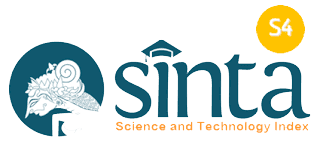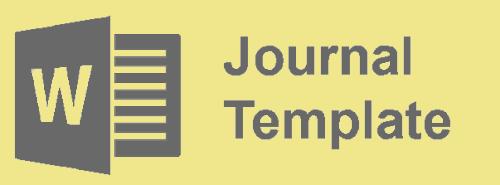Evaluation of the Impact of Sediment Material Usage in the Upper Bili-Bili Reservoir as Fine Aggregate Substitute in Concrete Construction: Public Administration Perspective
(1) Department of Civil Engineering and Planning, Faculty of Engineering, Universitas Negeri Makassar, Indonesia
(2) Department of Civil Engineering and Planning, Faculty of Engineering, Universitas Negeri Makassar, Indonesia
(3) Department of Civil Engineering and Planning, Faculty of Engineering, Universitas Negeri Makassar, Indonesia
(*) Corresponding Author
DOI: https://doi.org/10.26858/pdr.v7i1.53873
Abstract
Sedimentation in aquatic environments often occurs due to the presence of a high supply of sediment in that environment. Oceanographic factors, such as currents, play a significant role in the mechanism of sediment dispersion. The results of excavation processes that generate a significant amount of sediment often become unused waste. In this research, we strive to utilize the sand found in this sediment as a substitute for fine aggregates in concrete mixtures. Experimental testing methods are used to evaluate the characteristics of sediment that can be used as a substitute for fine aggregates. The research findings indicate that the sediment contains a high clay content, specifically 14.08%. We also found that concrete mixtures using 50% sediment sand from the Bili-Bili Reservoir had the highest compressive strength, reaching 17.36 MPa. However, the addition of Bili-Bili sediment sand to concrete mixtures resulted in a decrease in compressive strength. The greater the addition of Bili-Bili sediment sand, the lower the compressive strength. These findings emphasize the importance of testing materials to be used in concrete construction, especially aggregates, to meet all established requirements. By utilizing sediment as an alternative resource for fine aggregates, it can help reduce waste and consider public administration aspects in the management of sediment materials in the Bili-Bili Reservoir.
Keywords
Full Text:
PDFReferences
Ali, M. I. (2019). Status of water quality in watersheds due to mining industry activities. International Journal of Scientific and Technology Research, 8(12), 1799–1805.
Ali, M. I., Dirawan, G. D., Hasim, A. H., & Abidin, M. R. (2019). Detection of changes in surface water bodies urban area with NDWI and MNDWI methods. International Journal on Advanced Science, Engineering and Information Technology, 9(3), 946–951. https://doi.org/10.18517/ijaseit.9.3.8692
Allami, H., Afzali, A., & Mirzaei, R. (2023). Identification of microplastics in coastal sediments of three ports of Dayer, Kangan, and Siraf in Bushehr province, Iran. Regional Studies in Marine Science, 63, 103007. https://doi.org/https://doi.org/10.1016/j.rsma.2023.103007
Bag, S., Wood, L. C., Xu, L., Dhamija, P., & Kayikci, Y. (2020). Big data analytics as an operational excellence approach to enhance sustainable supply chain performance. Resources, Conservation and Recycling, 153, 104559. https://doi.org/https://doi.org/10.1016/j.resconrec.2019.104559
Borbon-Galvez, Y., Curi, S., Dallari, F., & Ghiringhelli, G. (2021). International industrial symbiosis: Cross-border management of aggregates and construction and demolition waste between Italy and Switzerland. Sustainable Production and Consumption, 25, 312–324. https://doi.org/10.1016/j.spc.2020.09.004
Byrkjeflot, H., du Gay, P., & Greve, C. (2018). What is the ‘Neo-Weberian State’as a Regime of Public Administration? In The Palgrave handbook of public administration and management in Europe (pp. 991–1009). Springer. https://doi.org/10.1057/978-1-137-55269-3_2
Darwis, R. S., Resnawati, R., & Hidayat, E. N. (2022). Institutional Network Structure in Citarum Watershed Management. Sosiohumaniora, 24(2), 263. https://doi.org/10.24198/sosiohumaniora.v24i2.38395
Denhardt, R. B., & Denhardt, J. V. (2003). The new public service: An approach to reform. International Review of Public Administration, 8(1), 3–10. https://doi.org/10.1080/12294659.2003.10805013
Frederickson, G., Smith, K. B., Larimer, C. W., & Licari, M. J. (2012). The Public Administration Theory Primer. Westview Press.
Hassett, M. P. (2022). The Effect of Access to Training and Development Opportunities, on Rates of Work Engagement, Within the U.S. Federal Workforce. Public Personnel Management, 51(3), 380–404. https://doi.org/10.1177/00910260221098189
Jones, G. N. (1970). Failure of Technical Assistance in Public Administration Abroad: A Personal Note. Journal of Comparative Administration, 2(1), 3–51.
Li, Y., & Wagenaar, H. (2019). Revisiting deliberative policy analysis. Policy Studies, 40(5), 427–436. https://doi.org/10.1080/01442872.2019.1618813
McNulty, T., & Ferlie, E. (2004). Process transformation: Limitations to radical organizational change within public service organizations. Organization Studies, 25(8), 1389–1412. https://doi.org/10.1177/0170840604046349
Pagani, M., & Pardo, C. (2017). The impact of digital technology on relationships in a business network. Industrial Marketing Management, 67, 185–192. https://doi.org/https://doi.org/10.1016/j.indmarman.2017.08.009
Pulignano, V., Carrieri, D., & Baccaro, L. (2018). Industrial relations in Italy in the twenty-first century. Employee Relations.
Siemiatycki, M. (2011). Urban transportation public–private partnerships: drivers of uneven development? Environment and Planning A, 43(7), 1707–1722.
Vosoughi, F., Nikoo, M. R., Rakhshandehroo, G., & Gandomi, A. H. (2021). Experimental dataset on water levels, sediment depths and wave front celerity values in the study of multiphase shock wave for different initial up- and down-stream conditions. Data in Brief, 36, 107082. https://doi.org/https://doi.org/10.1016/j.dib.2021.107082
Ziadi, A. R., Supriyono, B., & Wijaya, A. F. (2016). The Effectiveness of Information System in Public Complaint Service: An Implementation of E-Government based on Jakarta Smart City Applications. Global Journal of Management and Business Research: A Administration and Management, 16(8), 53–57.
Article Metrics
Abstract view : 52 times | PDF view : 0 timesRefbacks
- There are currently no refbacks.
Copyright (c) 2023 Moeh. Kay Muddin Asnur, Ahmad Rifqi Asrib, M. Reza Hasrul


































